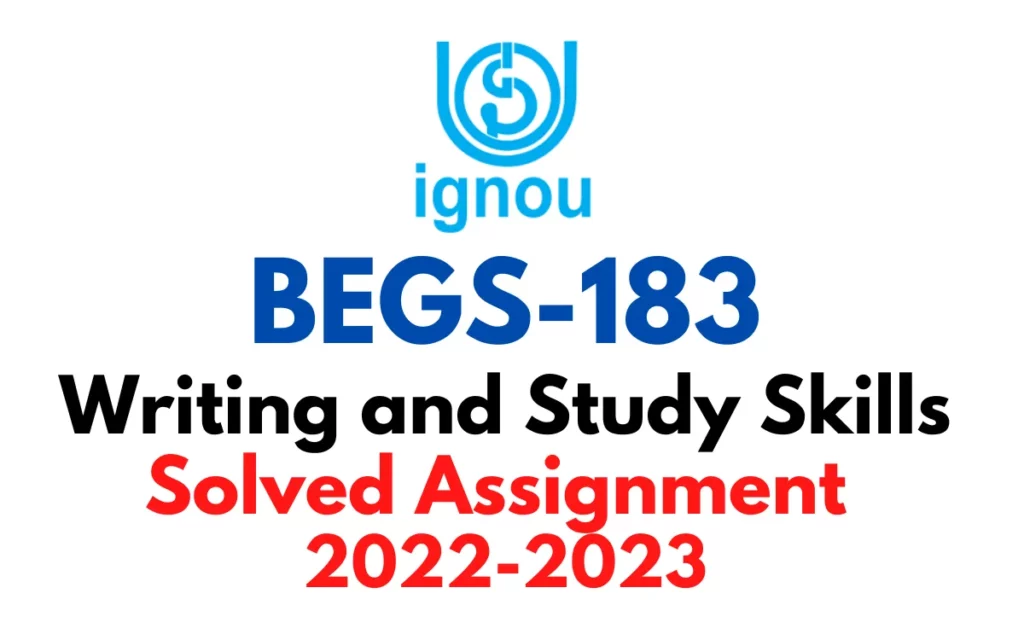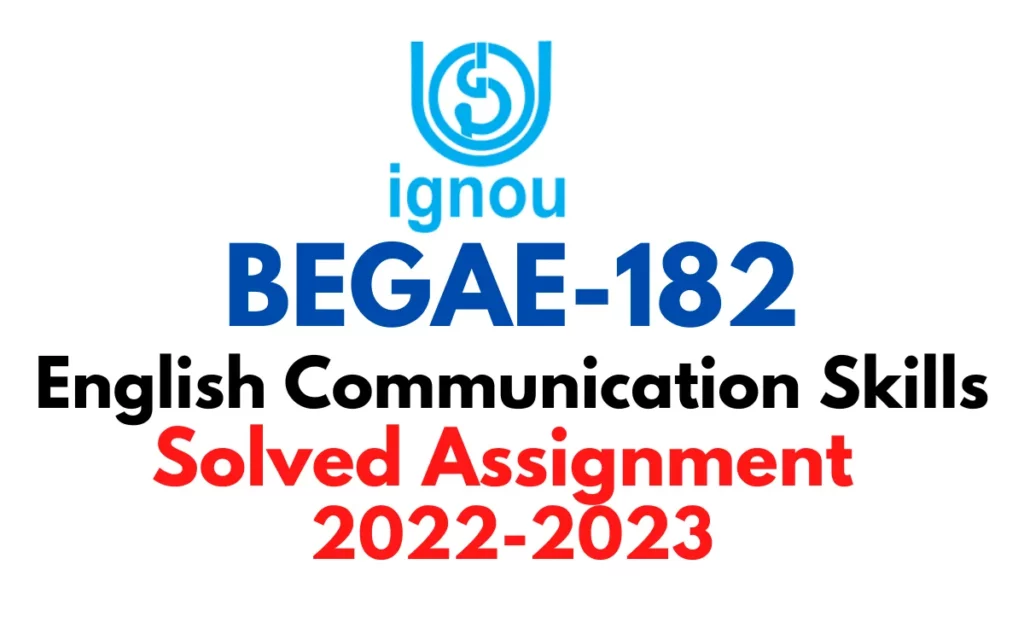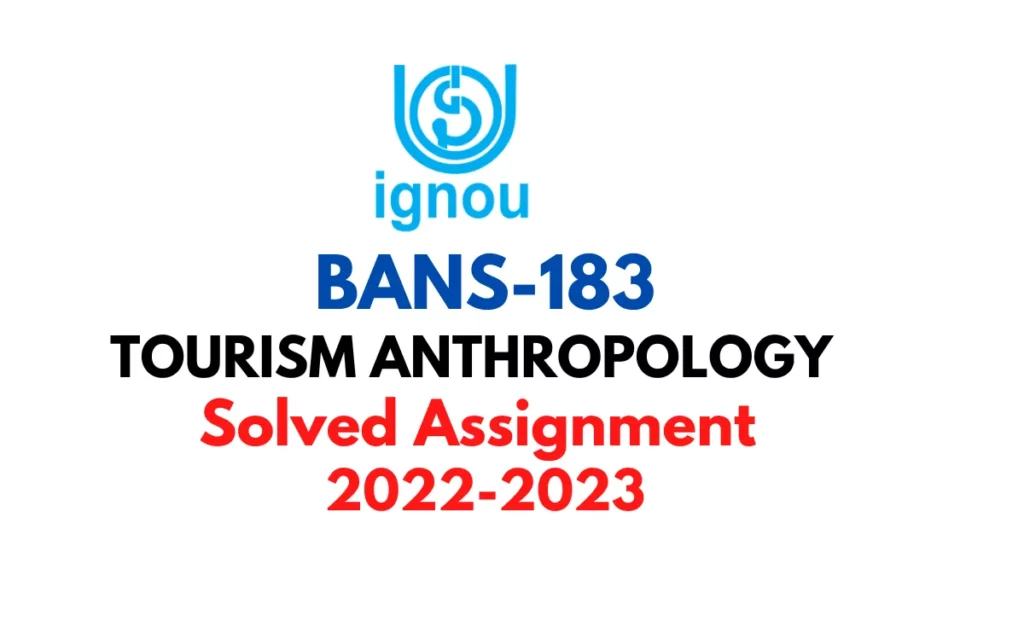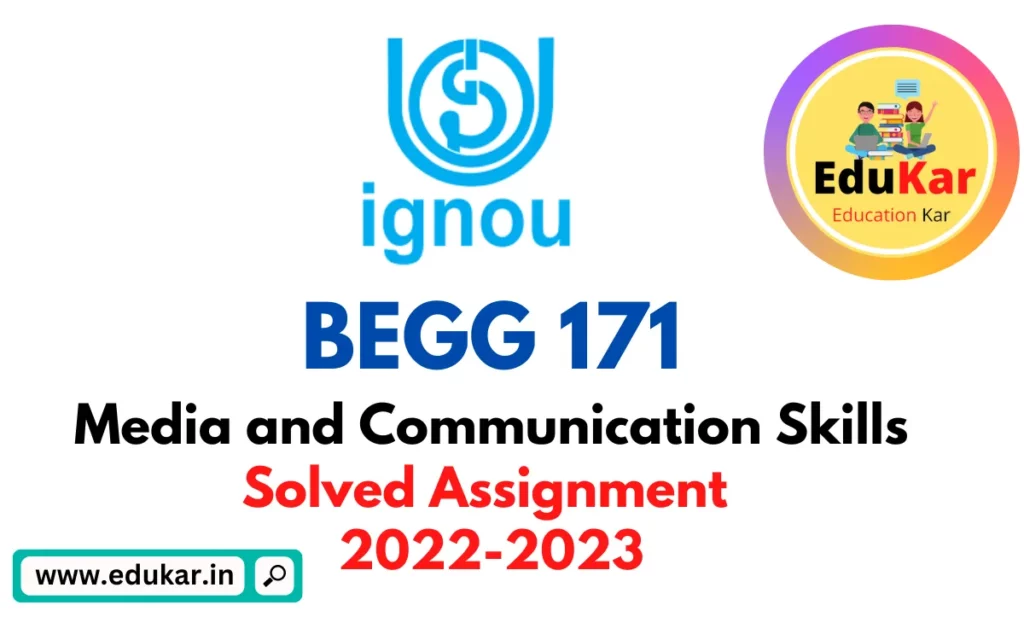Contents
- 1 SECTION A
- 2 I. Write short notes on the following: 5×5=25
- 2.1 1. How are new words formed through affixation and compounding? Give examples of both.
- 2.2 2. Describe the various steps involved in the process approach to writing.
- 2.3 3. Explain with suitable examples, how diagrams can be used to organize notes.
- 2.4 4. What aspects should be considered while writing a process analysis?
- 2.5 5. How can cohesive devices be used to bring about coherence in a paragraph? Give suitable examples.
- 3 SECTION B
- 4 II. Answer the following in around 150 words each: 10×4 = 40
- 4.1 1. What strategies would you adopt to become a critical reader?
- 4.2 2. What are the probable hard-spots in English Grammar, for those who learn English as a second language?
- 4.3 3. How is persuasive writing different from argumentative writing? Illustrate your answer with examples of both.
- 4.4 4. Briefly describe the three major types of study skills and show how they help us to become better learners.
- 5 SECTION C
- 6 III. 1. Write a paragraph of about 150 words on the topic given below.
- 6.1 1. Write a paragraph of about 150 words on the topic given below. Underline the topic sentence after writing the paragraph.
- 6.2 “Protecting our cultural heritage: aspects to be considered.”
- 6.3 2. Write a well-developed composition on the topic given below: “Importance of providing skills training to students in Indian higher education .”
- 7 FAQs:
BEGS 183: Writing and Study Skills (BAG) Solved Assignment 2022-2023. This course is designed to help you develop the writing and study skills necessary for success in your academic and professional pursuits. Through a combination of lectures, readings, and writing assignments, you will learn how to research, organize, and write effective academic papers, as well as how to improve your critical thinking, time management, and note-taking skills. The assignment for this course will provide you with the opportunity to apply the skills and knowledge you have acquired throughout the course, and will be a valuable tool for your future academic and professional endeavors.

| Title | BEGS 183: Writing and Study Skills (BAG) Solved Assignment 2022-2023 |
| University | IGNOU |
| Degree | Bachelor Degree Programme |
| Course Code | BEGS 183 |
| Course Name | Writing and Study Skills |
| Year | 2023 |
| Language | English |
| Assignment Code | BAG/2022-23 |
ASSIGNMENT
BEGS-183
Writing and Study Skills
SECTION A
I. Write short notes on the following: 5×5=25
1. How are new words formed through affixation and compounding? Give examples of both.
Answer: Affixation is the process of adding a prefix or suffix to a base word to form a new word. It is a common way of creating new words in many languages, including English. Prefixes are added to the beginning of a base word, while suffixes are added to the end.
For example, adding the suffix “-ness” to the base word “happy” forms the new word “happiness.” This process creates a noun from an adjective. Similarly, adding the suffix “-less” to the base word “hopeful” forms the new word “hopeless.” This creates an adjective from an adjective. Another example of suffixation is adding the suffix “-ly” to the base word “quick” forms the “quickly”, creating an adverb from an adjective.
Adding prefixes to a base word can also change the meaning of the word. For example, adding the prefix “un-” to the base word “happy” forms the new word “unhappy.” This changes the meaning of the base word “happy” from positive to negative. Similarly, adding the prefix “in-” to the base word “capable” forms the new word “incapable.” This changes the meaning of the base word “capable” from being able to do something, to not being able to do something.
Compounding is another way of creating new words by combining two or more base words together. This process can create new words with specific meanings that cannot be inferred from the individual base words. Compound words can be written as one word, hyphenated, or written separately.
For example, “book” and “store” can be combined to form the new word “bookstore.” This compound word specifically refers to a store that sells books. Another example is “software” and “engineer” can be combined to form “software engineer”. This compound word specifically refers to an engineer who specializes in software development. The word “Blackboard” is another example of Compound words, it is a combination of “black” and “board” which together refers to a type of writing board that used to be black in color.
2. Describe the various steps involved in the process approach to writing.
Answer: The process approach to writing involves a series of steps that a writer goes through in order to produce a written piece. These steps include pre-writing, drafting, revising, editing, and publishing.
- Pre-writing: This is the initial stage of the writing process where the writer gathers ideas and brainstorm about the topic. The writer may use different techniques like free writing, clustering, or outlining to generate ideas. During this stage, the writer also considers the purpose, audience, and context of the written piece.
- Drafting: Once the writer has a clear idea of what they want to write about, they begin to draft the written piece. This is where the writer puts their ideas into sentences and paragraphs. The writer may not focus on grammar or sentence structure at this stage, but rather on getting their ideas down on paper.
- Revising: After the initial draft is completed, the writer goes back to revise their work. This is where the writer evaluates the content, organization, and development of their written piece. The writer may make changes to the structure, add or delete information, and make sure the ideas are presented in a logical and coherent manner.
- Editing: After the writer is satisfied with the revision, they move on to the editing stage. This is where the writer focuses on the mechanics of the written piece, such as grammar, punctuation, and spelling. The writer also checks for consistency and clarity.
- Publishing: After the written piece has been revised and edited, it is ready to be published. The written piece can be published in various forms such as print, online, or as a digital document. Before publishing, the writer may also consider getting feedback from peers or a mentor.
3. Explain with suitable examples, how diagrams can be used to organize notes.
Answer: Diagrams can be an effective tool for organizing notes because they allow a writer to visualize and structure information in a clear and concise way. There are several types of diagrams that can be used to organize notes, including mind maps, concept maps, and flow charts.
- Mind maps: Mind maps are diagrams that use a central idea or topic, with branches that radiate outwards to represent related concepts or subtopics. Mind maps are useful for organizing notes because they show the hierarchical relationships between different ideas and help the writer to see connections and patterns in the information. For example, a mind map of the topic “Types of fruit” would have the central idea “Fruit” and branches that radiate outwards representing subtopics such as “Berries”, “Citrus fruit”, “Tropical fruit” and so on.
- Concept maps: Concept maps are diagrams that use nodes (circles or boxes) to represent concepts and lines to show the relationships between them. Concept maps are useful for organizing notes because they help the writer to see how different concepts relate to one another and identify gaps in their understanding. For example, a concept map of the topic “The water cycle” would have nodes representing concepts such as “Precipitation”, “Evaporation”, “Transpiration” and “Runoff” and lines connecting them to show the relationship between these concepts.
- Flow charts: Flow charts are diagrams that use symbols such as arrows and boxes to represent the flow of information or actions. Flow charts are useful for organizing notes because they help the writer to see the sequence of steps or processes involved in a topic. For example, a flow chart of the topic “The process of photosynthesis” would have boxes representing steps such as “Absorption of light energy”, “Conversion of light energy to chemical energy” and “Production of glucose” and arrows connecting them to show the sequence of the process.
4. What aspects should be considered while writing a process analysis?
Answer: When writing a process analysis, there are several key aspects that should be considered to ensure that the information is clear, accurate, and easy to understand.
- Purpose: The first step in writing a process analysis is to determine the purpose of the piece. Is it to inform, instruct, or persuade the reader? Understanding the purpose will guide the writer in determining the content, style, and tone of the piece.
- Audience: It’s important to consider the audience for whom the process analysis is being written. The level of detail, language, and terminology used should be appropriate for the intended audience. For example, a process analysis for a technical manual will require different language and level of detail than one written for a general audience.
- Sequence of steps: The process analysis should clearly and accurately describe the sequence of steps involved in the process being described. The steps should be presented in a logical order and should be easy to follow. Additionally, the writer should consider using visual aids such as diagrams or flowcharts to help the reader understand the process.
- Terminology: The process analysis should use specific and accurate terminology to describe the process. The writer should define any technical terms or jargon that may be unfamiliar to the reader. Additionally, the writer should avoid using overly technical language that may be difficult for the reader to understand.
- Safety precautions: If the process being described involves any potential hazards or safety risks, the writer should include clear and detailed instructions for avoiding or mitigating those risks.
- Tips and troubleshooting: The writer should include any tips or troubleshooting advice that will help the reader successfully complete the process. This can include common mistakes to avoid, or alternative methods for completing the process.
- Conclusion: The process analysis should end with a conclusion that summarizes the process, and may include any final thoughts or recommendations for the reader.
5. How can cohesive devices be used to bring about coherence in a paragraph? Give suitable examples.
Answer: Cohesive devices, also known as linking words or transitional words, are used to connect ideas within a paragraph and bring about coherence. They help to create flow and make it easier for the reader to understand the main point and follow the train of thought. Cohesive devices can be used in a variety of ways, such as:
- Conjunctions: Conjunctions such as “and,” “but,” and “or” can be used to connect two or more ideas within a sentence. For example, “The new technology is not only more efficient, but it also helps to reduce emissions.” In this sentence, the conjunction “but” connects the two ideas of efficiency and emissions reduction.
- Pronouns: Pronouns can be used to refer back to a previously mentioned noun, creating continuity of thought. For example, “John was not feeling well, so he went to see a doctor.” In this sentence, the pronoun “he” refers back to “John,” creating continuity of thought.
- Transitional phrases: Transitional phrases such as “in addition,” “furthermore,” and “in contrast” can be used to connect sentences or paragraphs and indicate the relationship between ideas. For example, “The new technology is not only more efficient, but it also helps to reduce emissions. In addition, it can be used in a variety of industries, making it a versatile solution.” The transitional phrase “in addition” connects the two sentences, indicating that the second sentence is providing additional information about the first sentence.
- Repetition of key terms: Repetition of key terms can also be used to create coherence within a paragraph. For example, “The new technology is not only more efficient, but it also helps to reduce emissions. Its versatility makes it an ideal solution for a wide range of industries.” Here the word “technology” is used in both sentences and “versatility” is used to link the two sentences.
SECTION B
II. Answer the following in around 150 words each: 10×4 = 40
1. What strategies would you adopt to become a critical reader?
Answer: There are several strategies that can be adopted to become a critical reader:
- Read actively: Instead of passively reading the text, actively engage with it by underlining or highlighting key points, making notes, and asking questions. This will help to deepen your understanding and make it easier to remember the key ideas.
- Analyze the structure: Pay attention to the text’s structure, including its organization, logic, and use of evidence. This will help you understand how the author is trying to convey their message and whether they are making a convincing argument.
- Consider the author’s perspective: Consider the author’s background, biases, and potential motivations for writing the text. This will help you understand their perspective and evaluate the credibility of their argument.
- Evaluate the evidence: Examine the evidence used in the text and determine whether it is credible, relevant, and sufficient to support the author’s argument.
- Check for logical fallacies: Be on the lookout for logical fallacies, such as false dichotomies, circular reasoning, and ad hominem attacks. These are common tactics used to mislead readers and should be avoided.
- Compare and contrast: Compare the text you are reading with others on the same topic, to see if they agree or disagree with the author’s argument.
- Reflect on your own beliefs and assumptions: Be aware of your own beliefs, values and assumptions and how they may affect your understanding of the text.
- Apply the information: Try to apply the information you have learned to real-world situations, to see how it can be used in practice.
2. What are the probable hard-spots in English Grammar, for those who learn English as a second language?
Answer: There are several areas of English grammar that can be challenging for those who are learning English as a second language. Some of these include:
- Tense: English has a complex system of tenses, and many students struggle with understanding when to use the past, present, and future tenses.
- Subject-verb agreement: English has many rules for subject-verb agreement, and students may find it difficult to know when to use singular or plural verbs.
- Modals: English modals (such as “can,” “may,” “must,” etc.) can be challenging to understand and use correctly.
- Pronouns: English has many different types of pronouns (such as personal, reflexive, relative, etc.) and it can be difficult for students to know when to use each one correctly.
- Phrasal verbs: English has many phrasal verbs, which are two or more words that work together as a single verb. These can be difficult to understand and use correctly.
- Prepositions: English has many prepositions, and they can be difficult to use correctly in phrases and idioms.
- Word order: English word order can be quite different from that of other languages, and it can be difficult for students to know the correct order for words in a sentence.
- Conditionals: English has a complex system of conditionals, and it can be difficult for students to understand when to use each one correctly.
- Passive voice: The passive voice can be tricky to understand and use correctly in English, as it is different from many other languages.
- Vocabulary: The large number of words in the English language can be overwhelming for students, and it can be difficult to know which words to use in which situations.
3. How is persuasive writing different from argumentative writing? Illustrate your answer with examples of both.
Answer: Persuasive writing and argumentative writing are similar in that they both aim to convince the reader of the writer’s point of view. However, there are some key differences between the two types of writing.
Persuasive writing is often used to influence people’s opinions or actions. It is often written in a more emotional and personal tone, and may use anecdotes, personal stories, and other persuasive techniques to appeal to the reader’s emotions. For example, a persuasive essay arguing for a particular political candidate might use personal stories from the candidate’s supporters to try to persuade the reader to vote for that candidate.
Argumentative writing is focused on presenting a logical and well-supported argument. It often uses evidence, statistics, and expert testimony to support the writer’s position, and is written in a more formal and objective tone. For example, an argumentative essay arguing for a particular policy change might use data on the policy’s effectiveness to try to convince the reader that the change is necessary.
Examples of persuasive writing:
- A commercial advertising a new product
- A letter to the editor of a newspaper encouraging readers to take action on an issue
- A fundraising letter for a non-profit organization
Examples of argumentative writing:
- A research paper on the effectiveness of a new medical treatment
- A newspaper editorial discussing a controversial issue
- A legal brief arguing for a particular interpretation of a law.
4. Briefly describe the three major types of study skills and show how they help us to become better learners.
Answer: There are many different types of study skills that can help us to become better learners, but some of the most important include:
- Time management skills: Effective time management skills involve setting goals, creating a schedule, and sticking to it. This allows us to prioritize our tasks and ensure that we have enough time to complete our work. By managing our time well, we can avoid procrastination and stay on top of our responsibilities.
- Active reading skills: Active reading skills involve actively engaging with the material we are reading, rather than just passively absorbing information. This can involve highlighting or annotating important information, summarizing key points, and asking questions about the material. By actively engaging with the material, we can better understand and retain information.
- Note-taking skills: Good note-taking skills involve organizing and summarizing information in a way that is easy to understand and review later. This can involve using different colors, symbols, or abbreviations to highlight important information, or creating a system of keywords and phrases to help us remember key concepts. By taking good notes, we can more easily review and recall information later.
SECTION C
III. 1. Write a paragraph of about 150 words on the topic given below.
1. Write a paragraph of about 150 words on the topic given below. Underline the topic sentence after writing the paragraph.
“Protecting our cultural heritage: aspects to be considered.”
Answer: Protecting our cultural heritage is of the utmost importance as it represents the unique identity and history of a society. The preservation of cultural heritage allows future generations to connect with their past and understand the cultural and historical context that shapes their society. However, protecting our cultural heritage can be a complex and challenging task as it encompasses a wide range of aspects that need to be considered.
One of the most important aspects to consider is the physical preservation of cultural heritage sites, artifacts, and monuments. This includes ensuring the structural integrity of these sites and taking measures to protect them from natural disasters, vandalism, and other forms of damage. Additionally, it is important to consider the conservation of cultural artifacts and works of art, such as paintings and sculptures, to ensure that they are not damaged over time.
Another important aspect to consider is the accessibility of cultural heritage sites and artifacts to the public. Making cultural heritage sites and artifacts available to the public allows individuals to gain a deeper understanding of their cultural heritage and promotes a sense of community and belonging. It also allows visitors to appreciate the cultural heritage of different societies and the importance of preserving it.
Lastly, it is essential to consider the ethical and moral aspects of cultural heritage preservation. This includes ensuring that the rights of indigenous communities and other marginalized groups are respected and that their cultural heritage is not exploited or commercialized. It also means being sensitive to the cultural context of the heritage and avoiding any actions that may be culturally insensitive or offensive.
2. Write a well-developed composition on the topic given below: “Importance of providing skills training to students in Indian higher education .”
Answer: In today’s rapidly changing world, providing skills training to students in Indian higher education has become increasingly important. The traditional model of higher education, which focuses solely on theoretical knowledge, is no longer sufficient to meet the needs of the modern workforce. The job market today requires individuals who possess not only theoretical knowledge but also practical skills that can be applied in the real world. By providing skills training to students in Indian higher education, we can help to bridge this gap and prepare students to be more successful in their future careers.
One of the main benefits of providing skills training to students in Indian higher education is that it helps to improve employability. As the job market becomes more competitive, employers are increasingly looking for candidates who possess a combination of theoretical knowledge and practical skills. By providing students with hands-on experience and training in real-world scenarios, we can help them to develop the skills that employers are looking for. This can increase their chances of getting hired and make them more valuable to employers.
Another benefit of providing skills training to students in Indian higher education is that it helps to foster innovation and creativity. By providing students with the opportunity to apply their theoretical knowledge in practical settings, we can help them to develop critical thinking and problem-solving skills. This can lead to the development of new and innovative ideas, which can ultimately benefit society as a whole.
Moreover, providing skills training to students in Indian higher education can also help to bridge the skills gap between the education system and the industry. The education system in India is often criticized for not being in tune with the needs of the industry. By providing students with the skills that are in high demand in the job market, we can help to address this gap and make students more attractive to employers.
FAQs:
Where can I find the solved assignment for BEGS 183 for 2022-2023?
You can find the solved assignment for BEGS 183 for 2022-2023 on the Edukar.in website.
Is it necessary to submit the solved assignment for BEGS 183?
Yes, it is necessary to submit the solved assignment for BEGS 183 as it is a part of the continuous evaluation process and carries a weightage of 30% in the final grade.
What is the deadline for submitting the solved assignment for BEGS 183?
The deadline for submitting the solved assignment for BEGS 183 will be provided by the study center or on the official website of IGNOU.
How should I submit the solved assignment for BEGS 183?
You should submit the solved assignment for BEGS 183 in the prescribed format to your study center, usually in a hard copy or through an online submission portal.









![[Solved Assignment] BPCS 188-APPLICATIONS OF SOCIAL PSYCHOLOGY (IGNOU-BAG) 2022-2023 BPCS 188-APPLICATIONS OF SOCIAL PSYCHOLOGY IGNOU BAG Solved Assignment 2022-2023](https://edukar.in/wp-content/uploads/2023/01/BPCS-188-APPLICATIONS-OF-SOCIAL-PSYCHOLOGY-IGNOU-BAG-Solved-Assignment-2022-2023-1024x640.webp)






